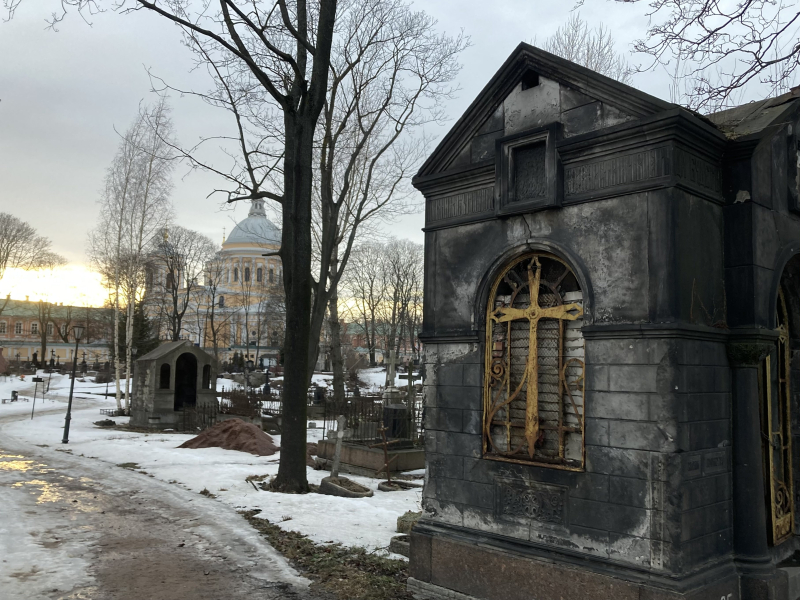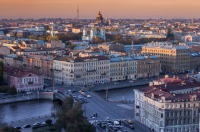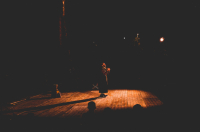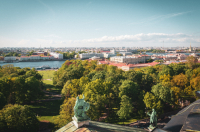Funerary art is often overlooked because of its grim connotations, but as showcased by the Taj Mahal, the Great Pyramids, and the Terracotta Army, artists seem to go all out when it comes to honoring the dead. As you may be surprised to discover, this also applies to St. Petersburg's cemeteries. They are not just places of mourning, but also of beauty and history. Each tombstone and monument tells a story of the individuals who once walked the streets of this vibrant city, and the art and architecture on display are truly breathtaking, making for a fascinating adventure.
Cemeteries of the Alexander Nevsky Lavra
The first monastery of St. Petersburg, founded by Peter the Great himself, is also the location of the city’s oldest and most renowned burial grounds: the Lazarevskoe, Tikhvin, Nikolskoe, and Kazachye cemeteries.
Let’s start with the oldest one: the Lazarevskoe cemetery (also referred to as the Necropolis of the 18th Century) began as a final resting place for tsar Peter’s relatives and courtiers. Highly prestigious and exclusive (at first requiring direct permission from the tsar himself to be buried there), it is the place to go if you are interested in the history of 18th-century Russia. If you find yourself here, check out the flowery epitaphs, admire the grandiose Baroque monuments, and take in the details of the sculptures, reliefs, and engravings. You might even recognize some names, such as Mikhail Lomonosov and Leonhard Euler, as both of these scientists are interred here.
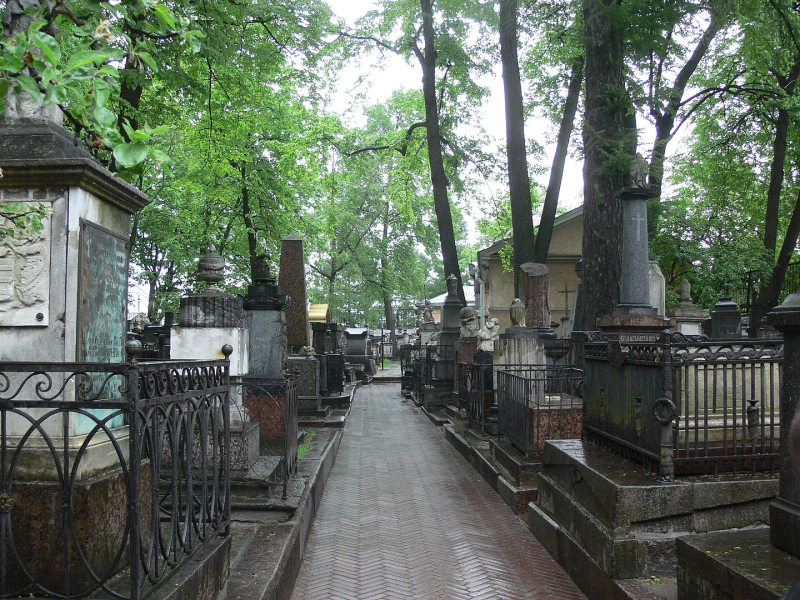
The central walkway of the Lazarevskoe cemetery. Credit: Christian Bickel / Wikimedia Commons / CC BY-SA 2.0 DE
The Tikhvin cemetery was just another high-class graveyard for most of the 19th century, but in the Soviet times it was re-imagined as a sort of national pantheon, with the remains of many famous composers, painters, sculptors, writers, and poets being moved there. It now contains the graves of Fyodor Dostoevsky, Mikhail Glinka, Pyotr Tchaikovsky, Ivan Krylov, Arkhip Kuindzhi, Boris Kustodiev, and other renowned artists and literary figures. The architecture is Gothic and Neoclassical, with a touch of Modernism evident in the more recent monuments.
The Nikolskoye cemetery offers insight into Russia as it was just before the Russian Revolution, with the style of the graves shifting closer towards what we are used to seeing now. While there is no shortage of beautiful mausoleums (decorated with intricate brickwork and mosaics), it is most notable for its landscaping, with a scenic lake in the middle of a park-like space.
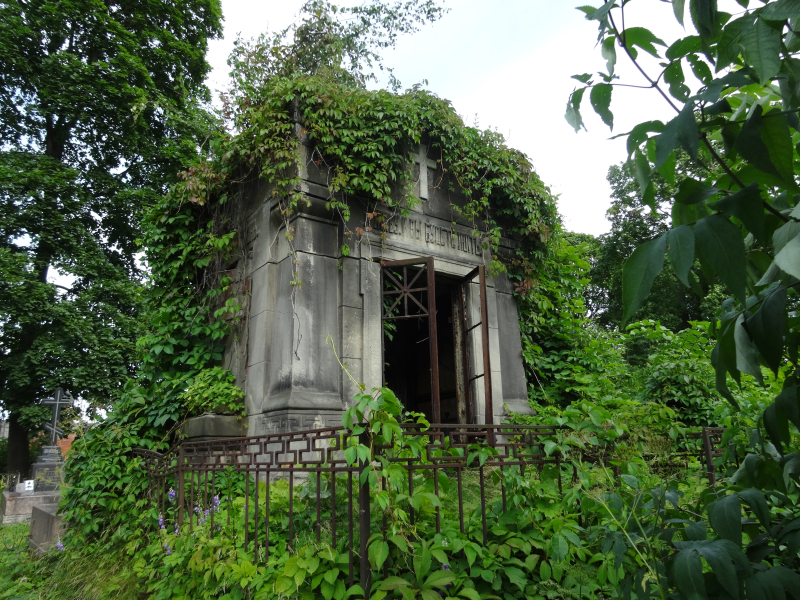
A mausoleum at The Nikolskoye cemetery. Credit: Anastasia Galyamicheva/ Wikimedia Commons / CC BY-SA 4.0
The Kazachye cemetery deserves a mention for how it reflects the tumultuous history of 20th-century Russia. It was founded in 1917 to inter the remains of the Cossacks who fought against the Bolsheviks, only to be renamed the Communist Cemetery after the revolution, becoming a memorial for the very same Bolsheviks! Now back to its original name, the harsh irony is visible in the eclectic monuments, with red stars, hammers-and-sickles, and orthodox crosses all present.
Volkovskoe Cemetery
Volkovskoe Cemetery is notable as a monument to the cultural diversity of St. Petersburg. From 1773 and up until the early 20th century, its Lutheran section (which also houses some tombs of Old Believers and Jews) served as the largest burial site for the city’s German community. Neat and orderly, its strict graves are mainly decorated by engravings and reliefs of Protestant iconography, though a rare few feature life-sized statues of saints, angels, and other religious figures. The Orthodox section of the cemetery has the famous Literary Walkways – a corner where many prominent Russian and Soviet public figures are buried, such as scientists Dmitry Mendeleev, Ivan Pavlov, and Alexander Popov; writers and poets Ivan Turgenev, Mikhail Saltykov-Shchedrin, Alexander Blok and Vissarion Belinsky. Each of their graves is marked by a unique sculpture that honors the work of the person who is interred there.
Smolensky Cemetery
Another cemetery representing a variety of cultural traditions, the Smolensky Cemetery has three sections: Orthodox, Lutheran, and Armenian. The Lutheran part is notable for having large and ornate family mausoleums rather than simple tombstones, invoking the vibes of a Gothic novel. The Armenian part is the only place in the city where you can observe the unique funerary art of Oriental Orthodoxy, which features beautifully engraved granite sarcophagi and tombstones as its primary form of decoration.
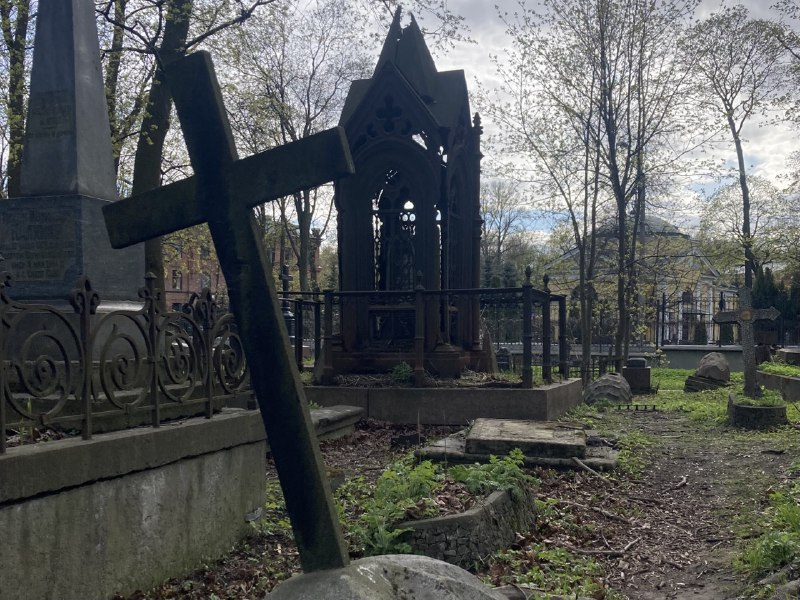
A mausoleum at the Smolensky Lutheran Cemetery. Credit: Mikhail Evdokimov / ITMO.NEWS
Preobrazhenskoe Cemetery
The only cemetery in St. Petersburg with a sizable Jewish section, it is also the only graveyard that incorporates Art Nouveau into its architecture. Its influence can be seen in the beautiful synagogue-like stone building, which was used for traditional burial ceremonies, as well as in numerous elegant tombs and monuments throughout the grounds.
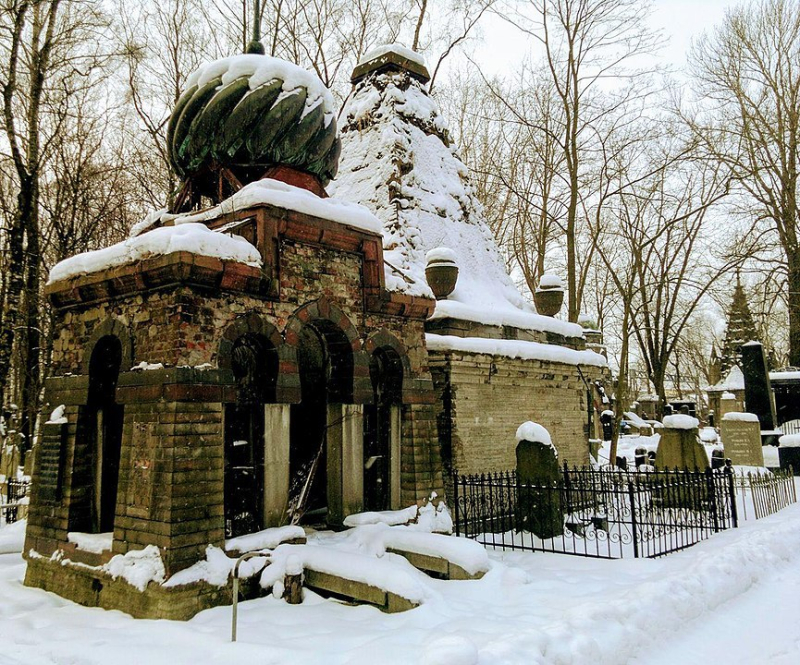
The tomb of Abram Kaplun, a merchant, at the Preobrazhenskoe Cemetery. Credit: O.Denysenko / Wikimedia Commons / CC BY-SA 4.0
Want to learn more about the famous Russians buried in these cemeteries? Check out our guide to apartment-museums of St. Petersburg’s writers, or, if you are a scientific-minded person, you can visit the preserved workplaces of the city’s world-famous scientists.
